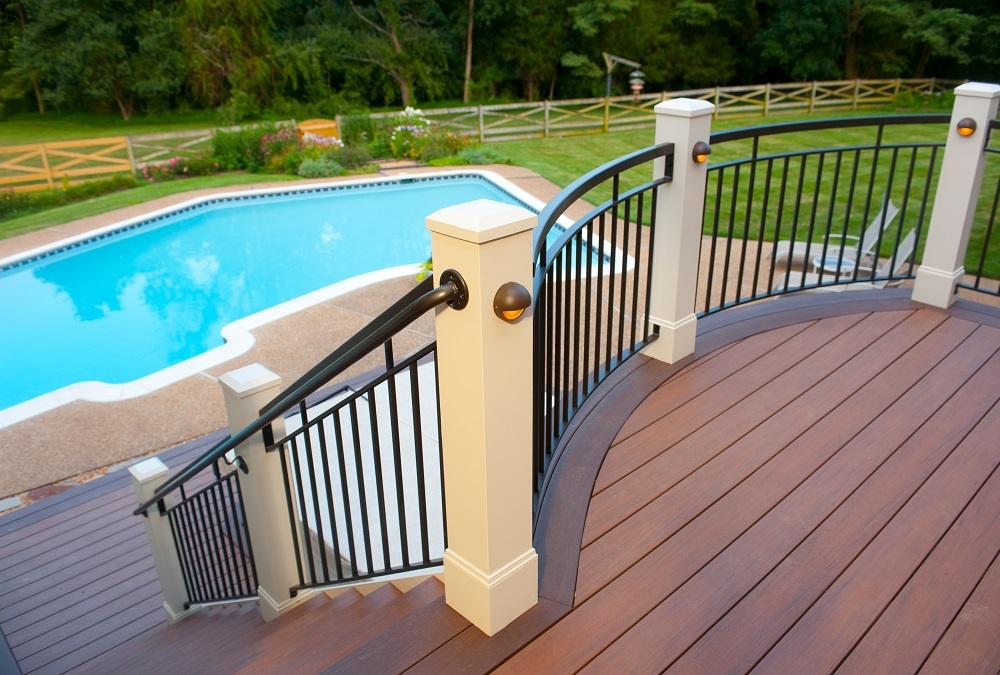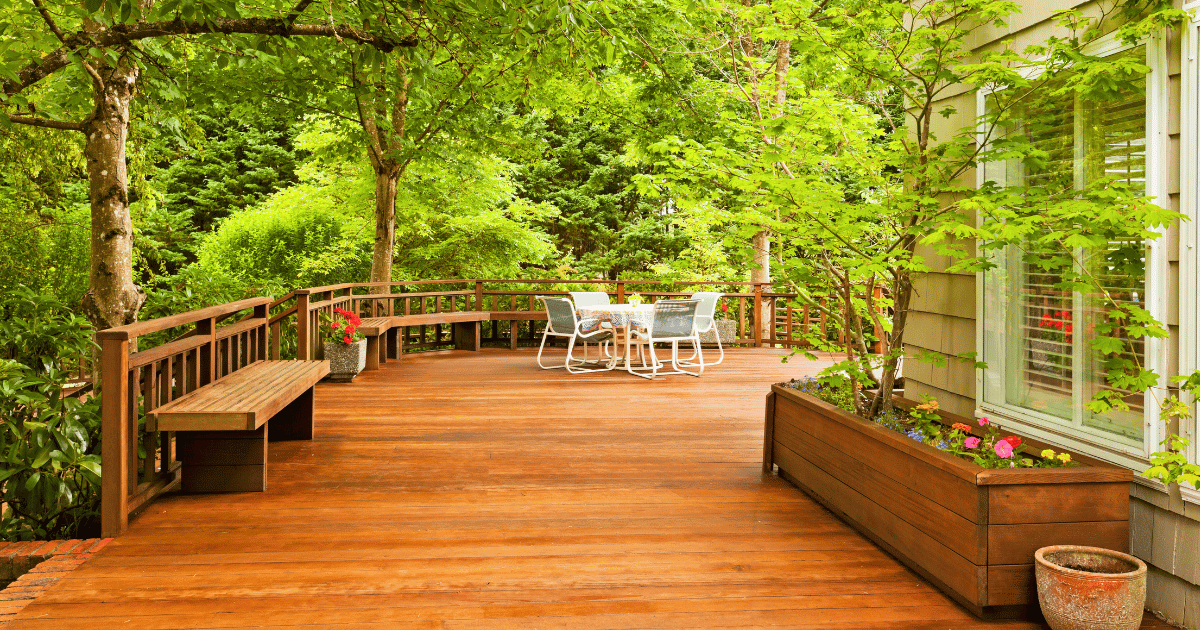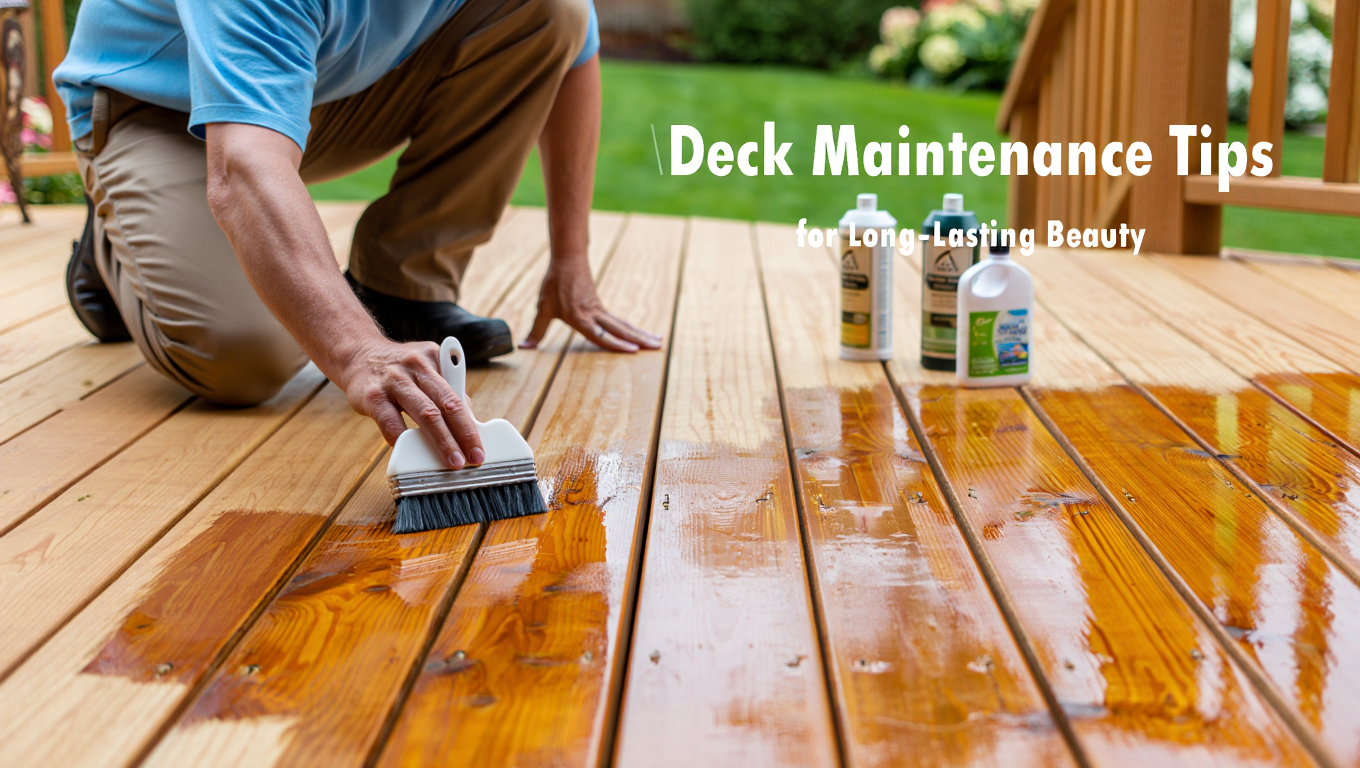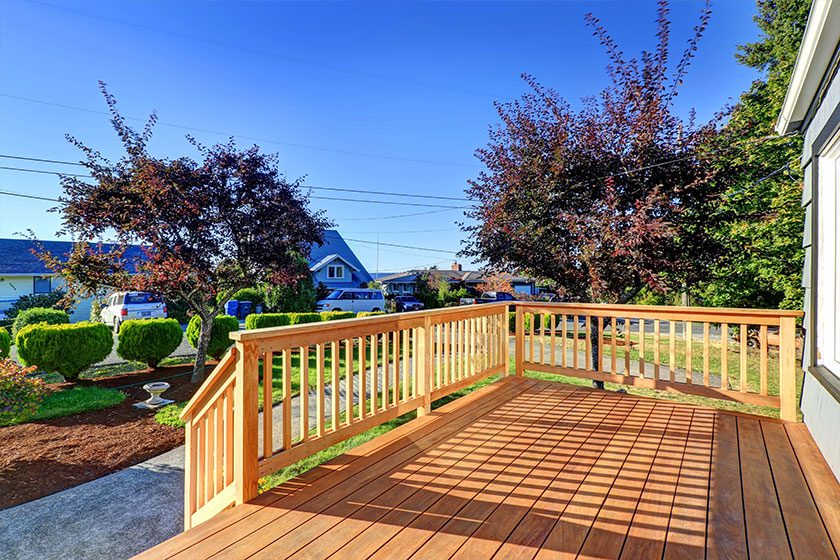A beautiful deck is a fantastic addition to any Pennsylvania home, extending your living space into the great outdoors. But what’s a deck without the perfect railing? It’s not just a safety feature; the right deck railing defines your outdoor space’s character and style. With so many options, how do you choose the right one?
Don’t worry, we’ve got you covered. In this guide, we’ll walk you through everything you need to know to select the perfect railing for your deck, from materials and styles to local building codes. By the end, you’ll be ready to make a choice that is safe, stylish, and perfectly suited to your home.

Why Your Deck Railing Matters More Than You Think
Your deck railing is one of the most visible parts of your deck. It’s a key design element that can either tie your outdoor space together or make it feel disjointed. Think of it as the frame for your outdoor masterpiece. A well-chosen railing can enhance your home’s curb appeal and even increase its value.
But it’s not all about looks. The primary function of a deck railing is safety. This is especially crucial for elevated decks, where a sturdy railing is essential to prevent falls. In Pennsylvania, any deck more than 30 inches above the ground is required to have a guardrail, so it’s not just a good idea—it’s the law.
Deck Railing Materials: Pros, Cons, and What to Expect
Choosing the right material is the most critical decision you’ll make. Each option has its own set of benefits, drawbacks, and maintenance requirements. Let’s break down the most popular choices for Pennsylvania homeowners.
| Material | Pros | Cons | Best For |
| Pressure-Treated Wood | Affordable, classic look, can be stained or painted | High maintenance, prone to warping and splinters | Homeowners on a budget who don’t mind regular upkeep. |
| Composite | Low maintenance, durable, won’t rot or splinter | Higher initial cost than wood, can look less natural | Those who want a wood-like look without the maintenance. |
| Vinyl (PVC) | Very low maintenance, easy to clean, resistant to fading | Can look “plastic,” fewer color options | A practical, no-fuss option that’s built to last. |
| Aluminum | Lightweight yet strong, low maintenance, modern look | Higher cost, can get hot in direct sun | Homeowners seeking a sleek, contemporary style. |
| Steel | Extremely strong and durable, classic wrought-iron look | Heavy, susceptible to rust if not maintained | A timeless, elegant choice for a high-end look. |
| Cable | Unobstructed views, modern and minimalist | Can be expensive, may require periodic tightening | Decks with a view you don’t want to block. |
| Glass Panels | Completely unobstructed views, high-end modern look | Expensive, requires frequent cleaning | Maximizing a scenic view in a modern home. |
A Closer Look at the Materials
- Pressure-Treated Wood: This is the go-to for many homeowners because of its low cost and traditional appeal. However, be prepared for yearly maintenance, including cleaning, sanding, and re-staining or painting to protect it from the elements and prevent rot.
- Composite: A popular choice from brands like Trex, composite railing is made from a blend of wood fibers and recycled plastic. It offers the look of wood without the upkeep. It’s a fantastic middle-ground option that balances cost, durability, and aesthetics. At Bucks Mont Decks, we often recommend composite materials for their longevity and minimal maintenance.
- Vinyl (PVC): If you want a railing you can practically forget about, vinyl is an excellent choice. It’s easy to clean with soap and water and will never need to be painted or stained. While some people find it less charming than wood or composite, modern vinyl railings come in a variety of attractive styles.
- Aluminum: Lightweight, strong, and rust-proof, aluminum is a fantastic low-maintenance option. It offers a sleek, modern aesthetic that pairs well with many home styles. Powder-coated finishes provide excellent durability and color retention.
- Steel: For a truly classic and elegant look, you can’t beat steel. It’s incredibly strong and durable, but it requires regular maintenance to prevent rust, especially in a humid climate like Pennsylvania’s.
- Cable and Glass: These options are all about the view. If you have a beautiful backyard, a lake, or a scenic vista, cable or glass railings will give you a nearly invisible barrier. They are at the higher end of the price spectrum and require some specialized installation.
Deck Railing Styles to Match Your Home
Once you’ve chosen a material, it’s time to think about style. Your deck railing should complement your home’s architecture.
- Traditional: A classic wood or composite railing with vertical balusters is a timeless choice that works with almost any home.
- Modern: For a more contemporary look, consider horizontal railings, cable systems, or glass panels. These create clean lines and an open, airy feel.
- Rustic: If you have a more rustic or country-style home, a wood railing with a natural finish or even a log-style railing can be a perfect fit.
- Custom: Don’t be afraid to mix and match materials! A wood railing with metal balusters, for example, can create a unique and stylish look. You can also add decorative post caps or lighting to personalize your railing.
Understanding Pennsylvania’s Deck Railing Codes
Safety should always be your top priority. In Pennsylvania, the building codes for deck railings are based on the International Residential Code (IRC). Here are the key requirements to keep in mind:
- Height: For residential decks, railings must be at least 36 inches high, measured from the deck surface to the top of the rail.
- Baluster Spacing: The space between the balusters (the vertical posts) must be no more than 4 inches. This is to prevent small children from squeezing through.
- Strength: The railing must be strong enough to withstand a 200-pound force applied in any direction.
These are the general guidelines, but it’s always a good idea to check with your local municipality for any specific local requirements. When you work with a professional deck builder like Bucks Mont Decks, we handle all the permits and ensure that your deck and railing are fully code-compliant.
Budgeting for Your Deck Railing
The cost of your deck railing will depend on the material you choose, the size of your deck, and the complexity of the installation. Here’s a general idea of what to expect in terms of material costs per linear foot:
- Wood: $15 – $50
- Composite: $15 – $60
- Vinyl: $20 – $60
- Aluminum: $50 – $200
- Steel: $50 – $250
- Cable: $60 – $500
- Glass: $100 – $600
Keep in mind that these are just material costs. Labor will be an additional expense, and it can vary depending on the complexity of the job.

Making the Final Choice
Choosing the right deck railing is a big decision, but it doesn’t have to be overwhelming. By considering your budget, your home’s style, and your willingness to perform maintenance, you can narrow down the options and find the perfect fit.
The best way to ensure you make the right choice is to work with an experienced deck builder. At Bucks Mont Decks, we have over 25 years of experience helping homeowners in Bucks and Montgomery counties design and build the decks of their dreams. We can show you samples of different materials, help you visualize how they’ll look with your home, and provide you with a detailed, no-obligation estimate.
Contact us today for a free estimate! We’d love to help you create an outdoor space you’ll enjoy for years to come.
What kind of deck railing are you dreaming of for your home? Share your thoughts in the comments below!





